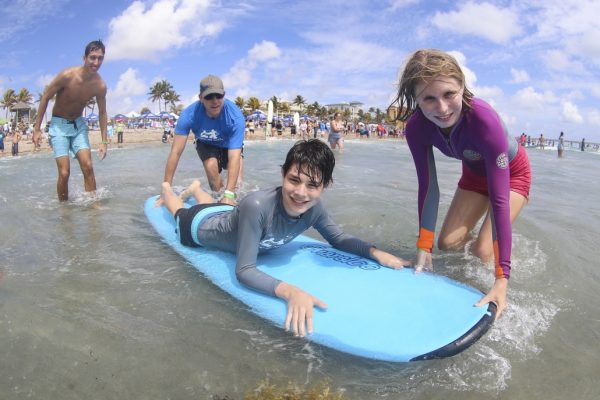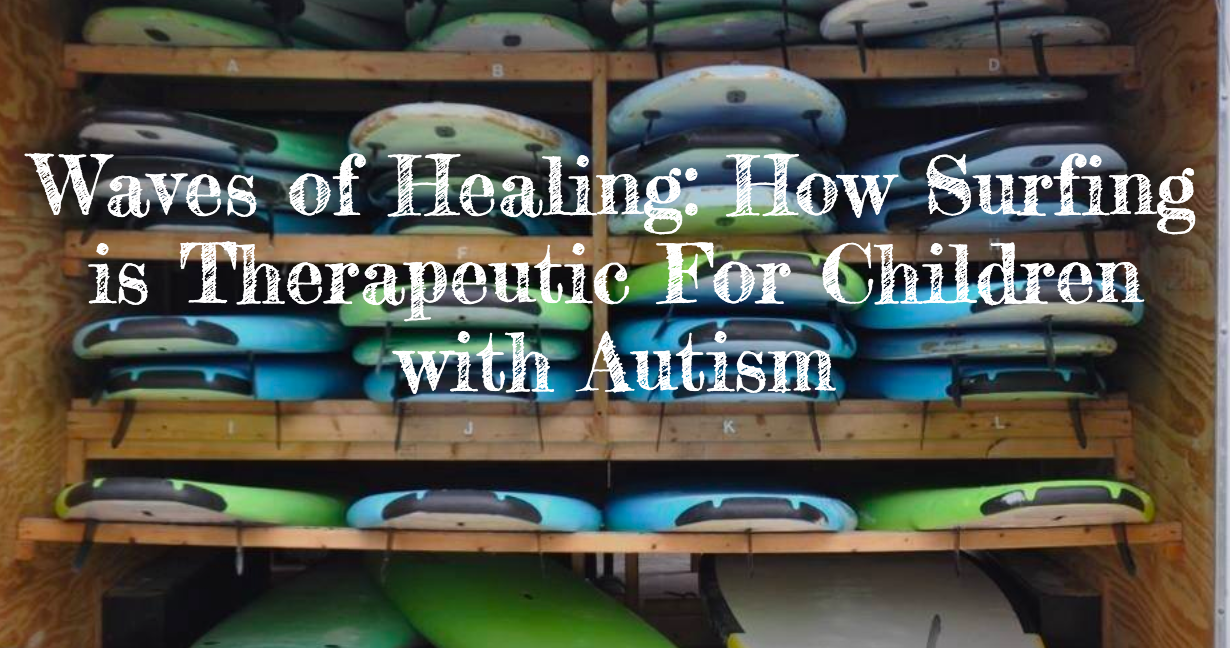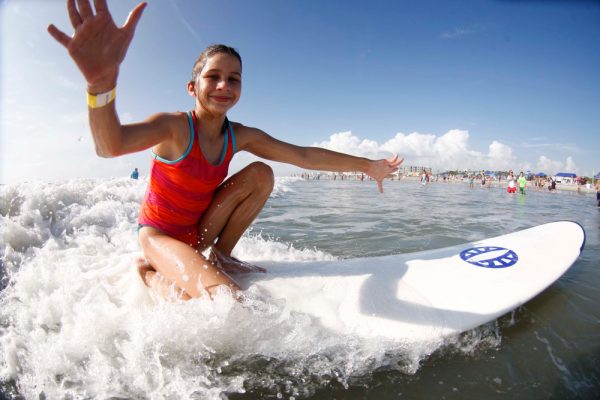Void Magazine allowed me to contribute to their annual “Do Good” magazine issue, where I wrote about how surfing is changing lives — no co-pay required.
The first time I saw surfing change the lives of children with special needs, I was standing with a surfboard on the sands of Jacksonville Beach.
While it seemed like an ordinary beach day—waist-high swell filled the area just south of the pier as beachgoers flooded the wooden walkways—what was happening in the water was anything but ordinary.
On this day, a nonprofit organization called Surfers for Autism offered to take children with autism surfing. If you aren’t familiar with autism, it’s a developmental disability that sees children struggle against difficulties with social skills, repetitive behaviors, and communication. This condition irrevocably changes the life of the child and the lives of everyone around them. According to the CDC, it affects one in 59 children.
But at this surf event, those with an autism diagnosis were not walking statistics. Instead, they were surfers.
Earlier in the day, families filled the beach, creating a makeshift city from their tents. Reggae music pumped out of the loudspeakers and surfboards lined the sand.
After a volunteer meeting, surfing—and the miracles—began.
Here’s how it worked: an army of volunteers stood in a line parallel to the beach, and were introduced by SFA staff to participants. Some children were excited; others looked nervous and quiet, and some were in absolute meltdown, crying and sending sand in all directions.
But none of that mattered once they entered the water, hand in hand with surf volunteers who called Jacksonville home.
When the right wave came, volunteers pushed the participants atop surfboards while chanting phrases like “up up up!” and “You can do it!”
Children diagnosed with nonverbal autism—who had rarely said any words to even their parents—were suddenly cheering and saying things like “I did it!” and asking for more with phrases like “Another wave!” Participants who were previously screaming on the beach in fear were suddenly calm, relaxed, and smiling. Some children were riding waves into shore as if they’d been doing so for years. Families and other volunteers formed a loud cheering section on the beach. Mothers and fathers cried.
The surf session lasted all day. Speaking with the parents during the event, I realized there was more to the unique relationship between surfing and autism. This wasn’t just a fun event to attend on the weekends—surfing was therapeutic for these children. And there was no copay required.
An avid surfer myself, I began to wonder exactly what made surfing therapeutic. What’s more, I was curious as to why a select group of families attended each Surfers for Autism event during their “Surf Tour.” Since the organization’s genesis in 2008, there have been 10-13 events up and down the Florida coast and these self-proclaimed groupies didn’t miss an event.
The inaugural Jacksonville Beach event was in 2010. I spent the next four years with the organization, seeking to understand how surfing is therapeutic from a scientific and a personal level. I went to therapy sessions, birthday parties, and became part of this eclectic surfing family. All the while, I wrote down what I heard and experienced.
I tell these families’ stories in Waves of Healing: How Surfing Changes the Lives of Children with Autism, published by Hatherleigh Press and Penguin Random House, which was released this year. These are stories about the struggles children with autism face—the struggle to stand on a surfboard, the struggle to communicate, the struggle to make progress in a world which accepts “normal” and rejects all else. But they’re also stories of breakthroughs, of authentic joy and unbridled excitement as the children learn to see their world from a whole new perspective — standing tall atop a surfboard, riding a wave all their own.
In my research, I learned how surfing can affect children with autism, how it can have a tremendous impact on parents and how it can unite a community.
In the book Blue Mind: The Surprising Science That Shows How Being Near, In, On, or Under Water Can Make You Happier, Healthier, More Connected, and Better at What You Do, scientist Wallace J. Nichols explores scientific studies on why water is therapeutic, which I stumbled upon for the writing of my book. Here’s a short excerpt:
Nichols writes: “There are all kinds of theories about why this happens. The water is stimulating visually, which fulfills some children’s sensory needs; water provides a safe and supported environment’ that surrounds the body with ‘hydrostatic pressure’ that ‘soothes and calms’ (as another expert said, it feels like the ultimate hug). Learning new motor skills like swimming, surfing or paddleboarding can have ‘a broad-ranging impact on the nervous system,’ according to William Greenough at the Beckman Institute at the University of Illinois: “There’s increased blood flow to crucial neurons, and the reshaping of abnormal structures in the front brain. But beyond that, surfing may be a vehicle to an emotional breakthrough, a way of reaching under the mask and perhaps connecting to kids like these.” Trying to balance and ride waves also provides them with a clear focus and keeps them in the present moment.
Not only is surfing life-changing for those with autism. It also transforms the lives of parents, something I saw firsthand. You see, thanks to these organized surf events, for the first time families have a support network, someone to relate to and discuss their challenges with. On the beach in Jacksonville, as well as at other events, commonality was found, and bonds were born.
I also saw communities rallying around these events and children with special needs. In city after city, food and water were donated for the families. Policemen and firefighters parked their cars in the beach parking lots so the participants (with sand covering their feet) could look inside and even finger paint on the exterior. Plus, local surfers were teaching their passion to participants and sharing in their excitement. To this day, many families have framed photos of their children standing alongside these volunteers on the beach.
My book is not a story of the past. It is a story that, like one’s surfing ability, continues to evolve.
Here’s what I mean: Surfers for Autism has held its annual Jacksonville Beach event for a decade and expects to continue the tradition, inviting familiar and new faces to the beach each year. Attend an SFA event and you’ll find participants who had their lives changed by surfing years ago are now helping others with the same diagnosis experience therapeutic feelings, serving as volunteer surf instructors. Or you can attend other surf therapy events. Thanks to this rapidly growing trend, there are now dozens of surf therapy organizations along America’s coastlines.










